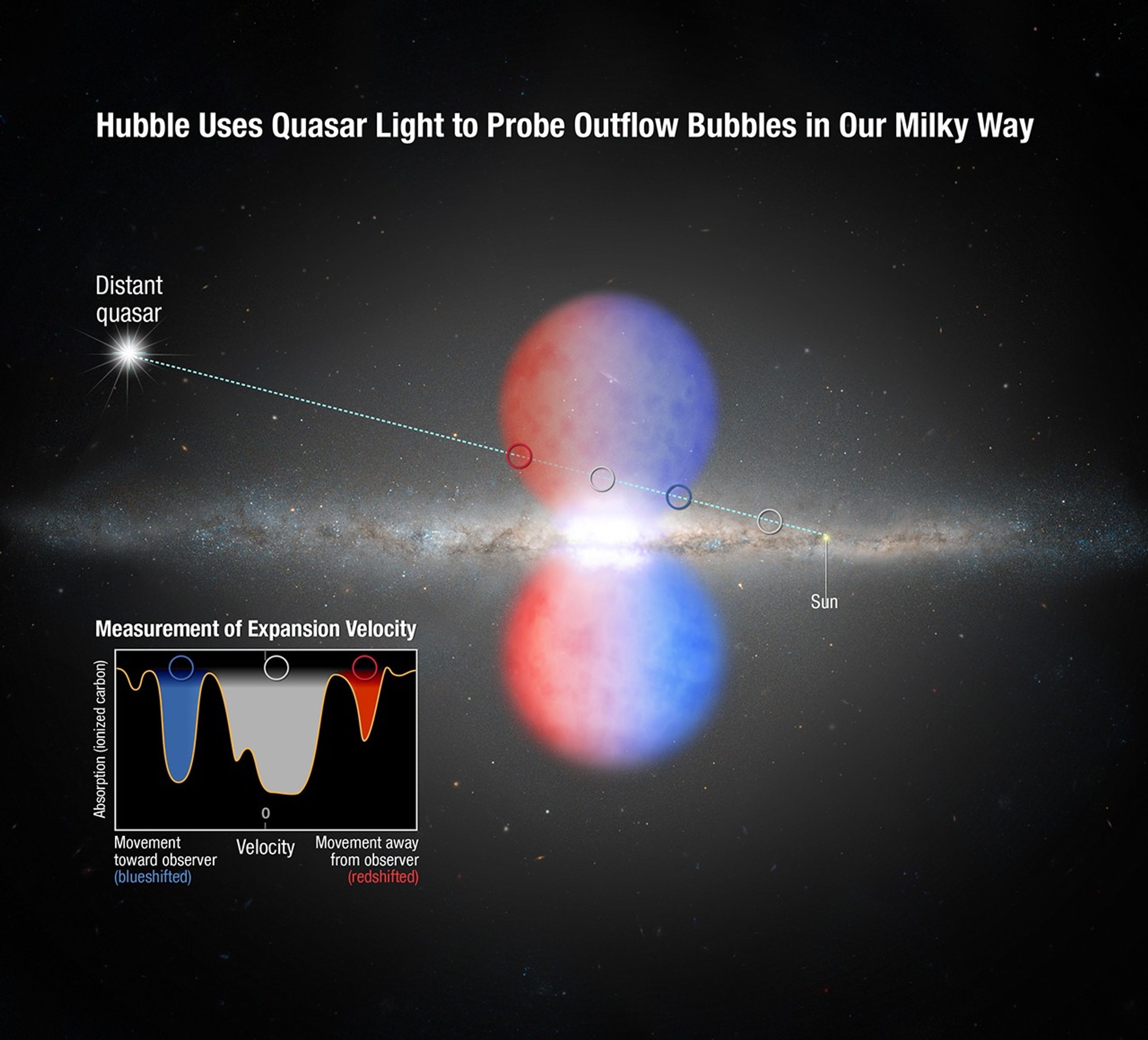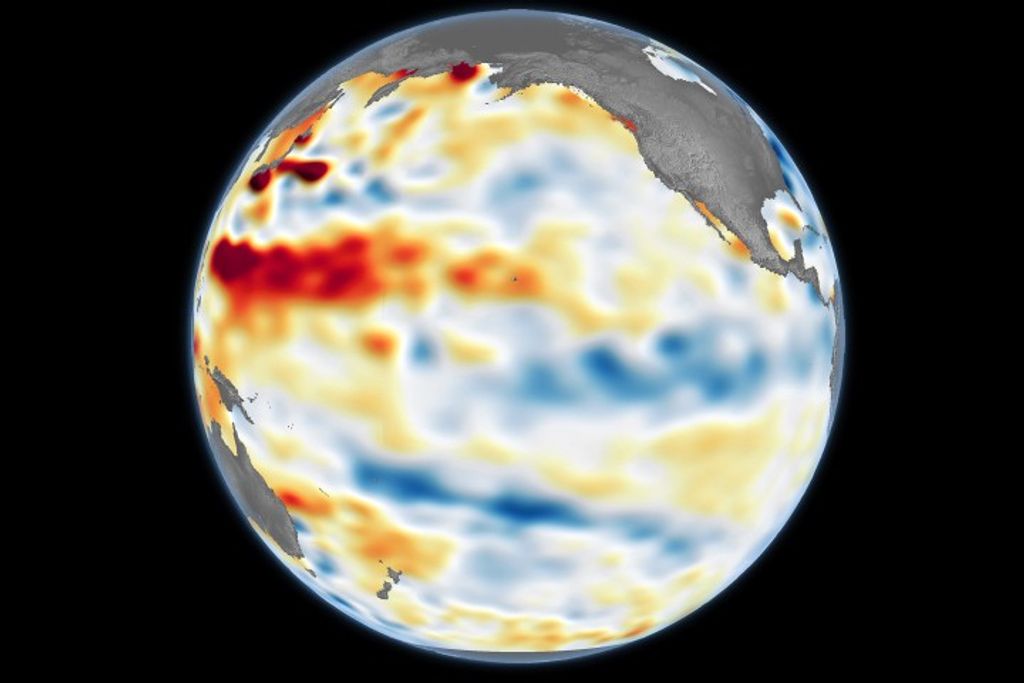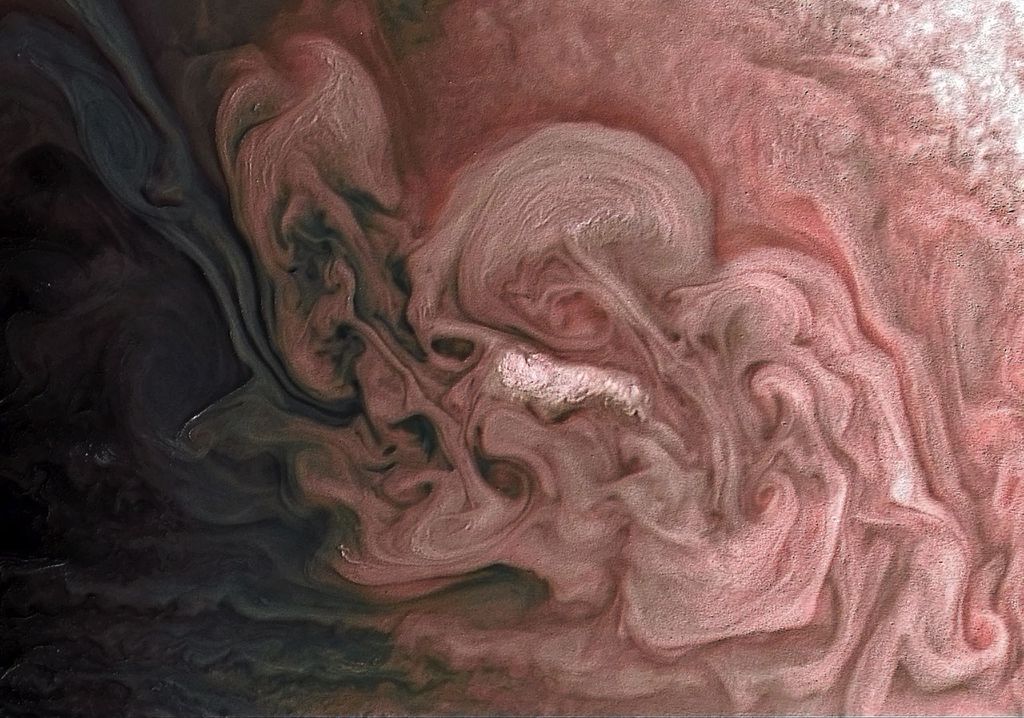1 min read
Quasar’s Light Yields Clues to Outflow

This graphic shows how NASA's Hubble Space Telescope probed the light from a distant quasar to analyze the so-called Fermi Bubbles, two lobes of material being blown out of the core of our Milky Way galaxy. The quasar's light passed through one of the bubbles. Imprinted on that light is information about the outflow's speed, composition, and eventually mass. The outflow was produced by a violent event that happened about 2 million years ago in our galaxy's core.
About the Object
- R.A. PositionR.A. PositionRight ascension – analogous to longitude – is one component of an object's position.17h 28m 19.80s
- Dec. PositionDec. PositionDeclination – analogous to latitude – is one component of an object's position.-14° 15' 55".87
- ConstellationConstellationOne of 88 recognized regions of the celestial sphere in which the object appears.Serpens
- DistanceDistanceThe physical distance from Earth to the astronomical object. Distances within our solar system are usually measured in Astronomical Units (AU). Distances between stars are usually measured in light-years. Interstellar distances can also be measured in parsecs.2 billion light-years (600 megaparsecs)
About the Data
- Data DescriptionData DescriptionProposal: A description of the observations, their scientific justification, and the links to the data available in the science archive.
Science Team: The astronomers who planned the observations and analyzed the data. "PI" refers to the Principal Investigator.Data were obtained from the HST proposal: 13448, P.I. A. Fox (STScI) et al. The science team comprises: A. Fox and R. Bordoloi (STScI), B. Savage (University of Wisconsin, Madison), F. Lockman (NRAO/GBT), E. Jenkins (Princeton University Observatory), B. Wakker (University of Wisconsin, Madison), J. Bland-Hawthorn (Institute of Astronomy/University of Sydney), S. Hernandez (STScI), T.-S. Kim (Osservatorio Astronomico di Trieste, Italy), R. Benjamin (University of Wisconsin, Whitewater), D. Bowen (Princeton University Observatory), and J. Tumlinson (STScI). - InstrumentInstrumentThe science instrument used to produce the data.HST>COS
- Exposure DatesExposure DatesThe date(s) that the telescope made its observations and the total exposure time.February 10, 2014, Exposure Time: 3.8 hours
- FiltersFiltersThe camera filters that were used in the science observations.Gratings: G130M and G160M
- Object NameObject NameA name or catalog number that astronomers use to identify an astronomical object.PDS 456
- Object DescriptionObject DescriptionThe type of astronomical object.Quasar
- Release DateJanuary 5, 2015
- Science ReleaseHubble Discovers that Milky Way Core Drives Wind at 2 Million Miles Per Hour
- Credit
Share
Details
Last Updated
Aug 17, 2025
Contact
Media
Claire Andreoli
NASA’s Goddard Space Flight Center
Greenbelt, Maryland
claire.andreoli@nasa.gov






























